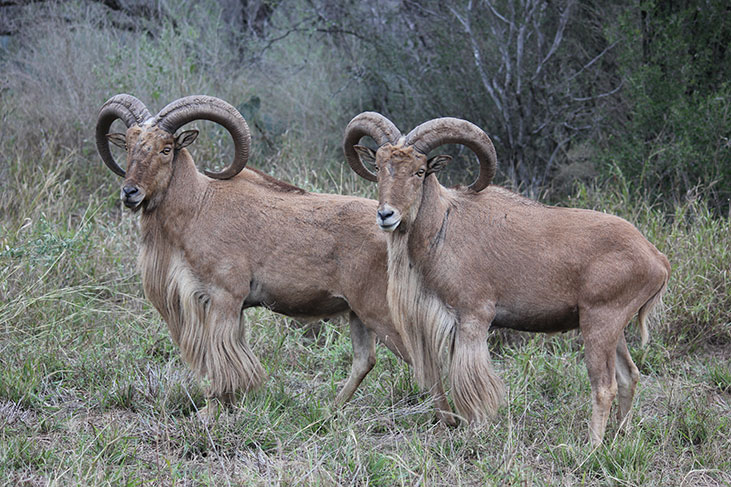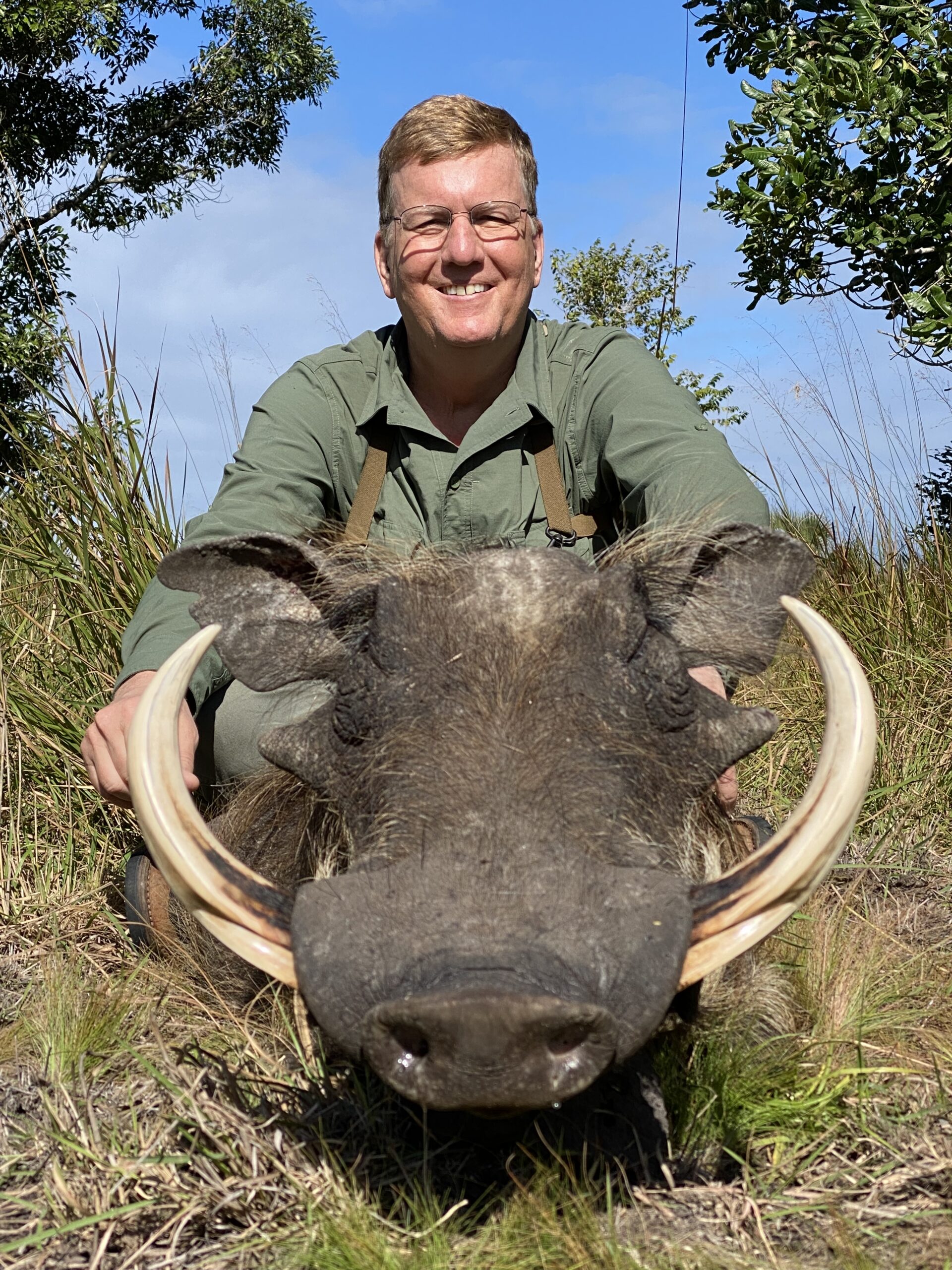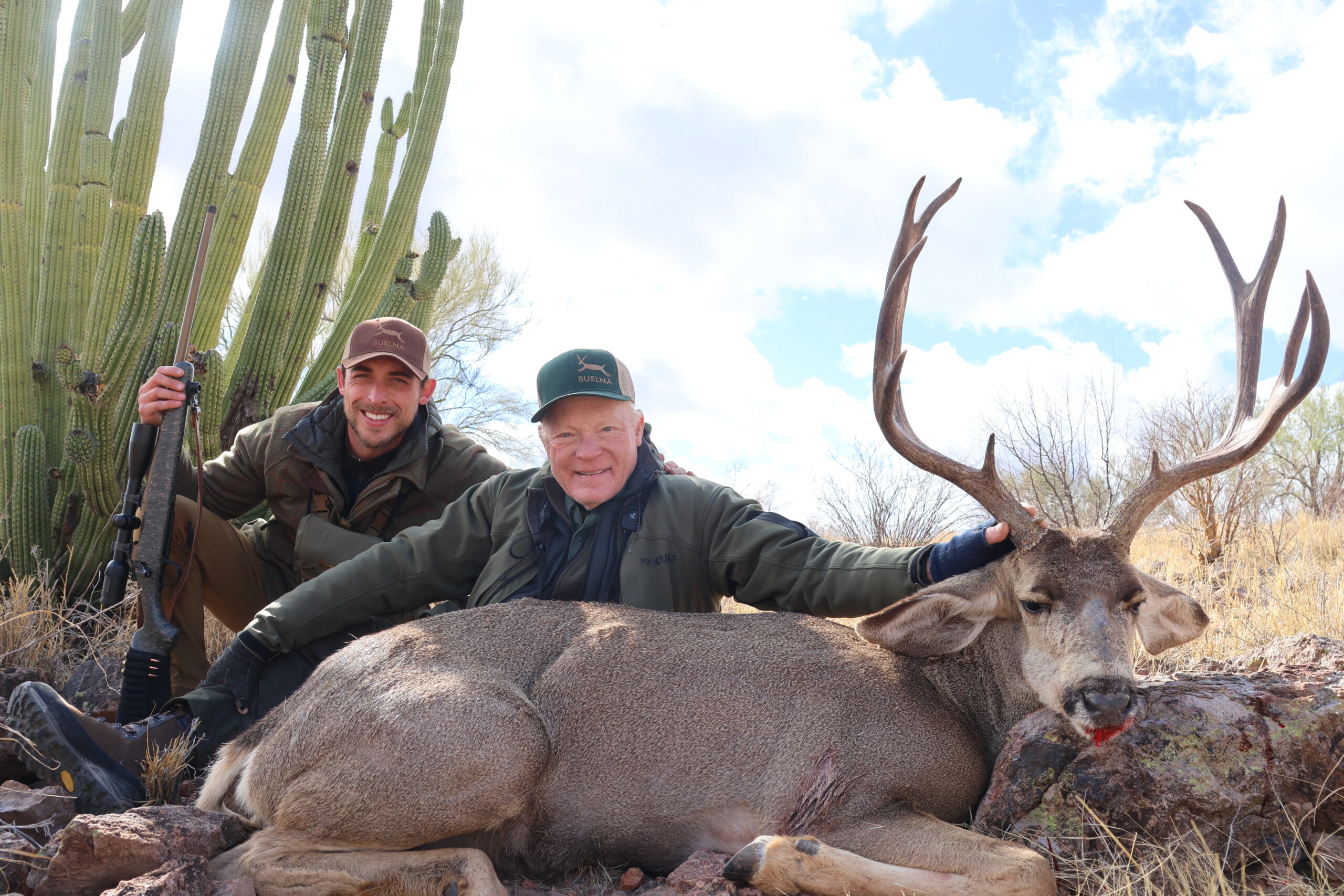Hunters from all over the World hunt in Texas. They once were more active in the Fall for deer, pronghorn and even doves. Now, it is year-round, because Texas has the highest concentration of exotic game in the U.S., and hunters actively chase axis deer, aoudad and nilgai (to name a few) throughout the year. Local Texas hunters number more than a million, with about 800,000 being big game hunters, and about a half million are wing shooters (doves, quail, waterfowl). Hunting is big in Texas, and there are several reasons why.
Private property, ownership size, good habitats with a variety of game are four key reasons why Texas is so popular to worldwide hunters. Other states, mostly West of the Mississippi, have good habitats and vast landholdings, but hardly anything is private. Most states East of the Mississippi have good habitats, but land ownerships are small, and again, almost nothing is private.

Texas landowners can put up lodges, feeders, blinds, cameras and high fences to provide some of the best hunting in the world. Other states have problems with camp houses, feeders, blinds, cameras and other things that make for good hunting, because of theft, vandalism, state game laws, small ownerships and lack of interest. In this short epistle, we will look at what makes Texas so great for hunters.
DOVES
Two of the best places to hunt doves in the world are Texas and Argentina. Most dove hunters in Europe go to Argentina for eared doves that fly through corridors like bats out of a cave. Stringers of dove from east to west, as far as you can see, fly all day between the grain fields and thorny brush of the Pampas. My gun barrels got hot during dove hunts in Argentina, and there were no bag limits.
A good choice of gun for Argentina doves is a Remington 870 Wingmaster pump. These actions are loose and will not lock up from the heat of fast shooting. My Browning Citori got so hot I couldn’t open the action. Some hunters use two guns—shooting one while a guide loads the other.
Texas has good dove hunting in the western two-thirds of the state, but the best dove hunting is South of I-35 and I-10. Water hole hunting is best during the last two hours before sunset, but grain fields provide excellent hunting during the day. Hunting in arid West Texas is best at windmill water. Some bag limits can be filled with both mourning and white-winged doves, and three-day trips can fill up the ice chest. When the smoke clears during the normal seasons, some 400,000 dove hunters have expended 15 million shotgun shells and brought home five million birds.
Hunters come from all over the U.S. to hunt doves in Texas. Group hunts may have a variety of retrievers—dogs, or kids from a local school who make a few bucks shagging doves for the hunters. Dove hunting in Texas is a fun time, often enjoyed by the whole family.

Doves are not only for shooting—they are for eating. A Sunday morning dove brunch, boosted by a Bloody Mary or two, is the epitome of Texas dove hunting!
A little trivia: Story has it that the original Bloody Mary refreshment was invented by Earnest “Papa” Hemingway and his bartender at Key West, Florida in about 1930. Hemingway wanted a drink that left no alcohol on his breath, and the bartender suggested tomato juice as the base. They added liberal amounts of vodka, tabasco, Worcestershire and black pepper. A stick of celery and a few drops of lime were later added to the recipe. “Papa” named the popular concoction after Mary I of England, who was also known as “Bloody Mary.”
RIO GRANDE TURKEY
Central Texas, from the Panhandle to the Rio Grande, has vast numbers of turkeys. There was a time when all turkeys were taken by deer hunters in the fall, but in 1969 a spring season was established. Now, spring hunters take the majority of birds killed from an estimated population of one million-plus Rio Grande subspecies.
DEER (whitetail and mule)
Texas whitetails are plentiful in the Edwards Plateau (Hill Country) and South Texas. For volume, the Hill Country is tops, and half of the deer killed in Texas come from that area. But, for quality, South Texas ranks high and draws a multitude of trophy hunters from all over the world. Many ranches are high-fenced and have quality deer management programs in place. Most (but not all) of the very best whitetail bucks come from these high-fenced ranches.
Resident deer hunters make up over 90 percent of the whitetail crowd, with an annual hunter participation of some 800,000. The other 10 percent come from all over the world, and usually want the highest quality bucks available—for a price.
Deer contests are popular in Texas, and hunters from all over the state make entries to six to eight big deer contests. The oldest, Muy Grande of Freer, was started in 1965 by Leonel “Muy” Garza in a Texaco gas station. Other big contests are Los Cazadores in Pearsall, ANGADI in Nueva Laredo (across the Rio Grande from Laredo), Cola Blanca in Laredo and Trophy Game Records of Ingram. The biggest and most prestigious are the Trophy Hunters Extravaganza Deer Contests in Houston, Fort Worth and San Antonio. Other contests come and go, but hunters have a choice of several big deer contests each season.
Mule deer hunting is available in both West Texas and the Panhandle. All the mountainous country West of the Pecos is good mule deer range, and the Canadian River Breaks have good hunting in the Panhandle. Much of the mule deer hunting is by locals, but there are guided hunts available in both areas. Mule deer are one of the categories in the Trophy Hunters Extravaganza Deer Contests.

PRONGHORN
Texas has two distinct areas for hunting pronghorns—West Texas and the Texas Panhandle. Both areas have had excellent pronghorn hunting in the past, but the Panhandle has suffered from habitat loss in the last 30 years. Predation is high on pronghorns, with eagles, coyotes and bobcats being the prime predators. The best counties in the Panhandle are the western and northern tier.
Hudspeth County in West Texas is the premier pronghorn county west of the Pecos. Other good counties are Brewster, Presidio and Jeff Davis. Don’t expect to see many record book bucks in West Texas, but Hudspeth has some very high-quality pronghorns, and a few in the record book.
TEXAS EXOTICS
The “Big Three” of Texas exotics are axis deer, aoudad and nilgai. There are others, such as blackbuck, sika deer and some other rare species, but the big three are the most hunted, with no season or bag limit.
Axis Deer

Axis deer are found mostly in the Edwards Plateau, in both high-fenced and open range situations. Both sexes are beautifully spotted, and male axis have long-beamed antlers with six points. The benchmark for most hunters is 30-inch beams, and 35 to 36-inch beams are rare. The meat of axis is probably the best of all deer in Texas.
Aoudad
Aoudads are a lone species of goat-like animals that were brought to the U.S. as zoo animals in the 1930s. The animal’s native range is the Barbary Coast of North Africa, and males have wide, sweeping horns and long hair under the neck and brisket. Early amateur taxonomists called it “aoudad sheep” or “Barbary sheep,” but recent DNA studies have shown that the animal is more goat than sheep and is a true species—aoudad (which in Arabic means “sand goat.”)

Texas ranches with high fences brought the animals to Texas in the 1940s, and Texas Game and Fish Department stocked aoudad in the Palo Duro Canyon in 1956. Aoudads escaped from high fences, and today a large population of aoudads run wild in the Panhandle, West Texas, and the Edwards Plateau. The animals do well on arid lands and are hard to keep inside high fences.
Hunters with determined attitudes and good boots go after the aoudad in the very rough terrain of West Texas and the Panhandle. Most of the aoudads killed in the Edwards Plateau are guided hunts or are accidental on open range. The benchmark for horns is 30 inches and 34 to 36-inch horns are very rare. The aoudad is as strange as a $3 bill and is doing very well in good habitats of Texas.
Nilgai
The nilgai antelope was first brought by rail to King Ranch in South Texas in 1926 and released from the box cars to freely roam the ranch. The original stocking of about 25-30 animals from the San Diego Zoo, completely disappeared. Family members of King Ranch again brought about 30 nilgai to the ranch in 1930 and penned them up for a while, giving the animals a “slow release.” These animals accepted the habitat and today there are probably 10-15 thousand nilgai on King Ranch and adjacent properties. Nilgai are popular with South Texas ranchers, and many nilgai are being trapped and moved to various ranches in deep South Texas. Hunting is usually guided and can be high dollar for the “Blue Bulls of the Wild Horse Desert.”
Nilgai are strange creatures—big at the shoulder, with little head and rear end. Their home range is Pakistan and India. Older bulls are dark blue-black during mating season, and a good set of straight horns will measure nine inches. Mature bulls may weigh as much as 600 pounds, so it is not a hunt for the meek. The brown females can weigh as much as 400 pounds, and are the best wild meat that Texas has to offer. To my knowledge, South Texas has the only huntable population of nilgai in the United States or elsewhere.

There are other huntable species in Texas. We have the diminutive native javelina that ranges over most of South Texas and farther west. There was a time when the javelina was hunted during the winter months (especially by archery hunters) and the half-grown gray animals were often butterflied and baked or broiled as a specialty item. However, today’s hunters hardly ever shoot a javelina because the liberal deer seasons provide all the shooting and wild meat that hunters can use.
A lot of people come to Texas—some as tourists; some as sports stars; some to party and have fun in a variety of ways; and some come to hunt. If you see a pickup or van going south from San Antonio or Austin with a sign on the side “Texas—Or Bust,” it will be an-out-of stater going to the beautiful Texas Coast or to a hunt in South Texas. Either one is unique to Texas!–Horace Gore




